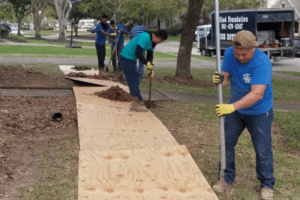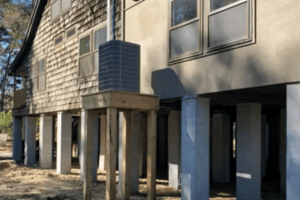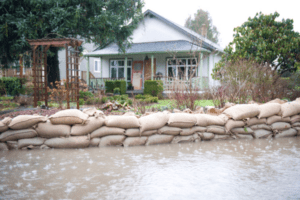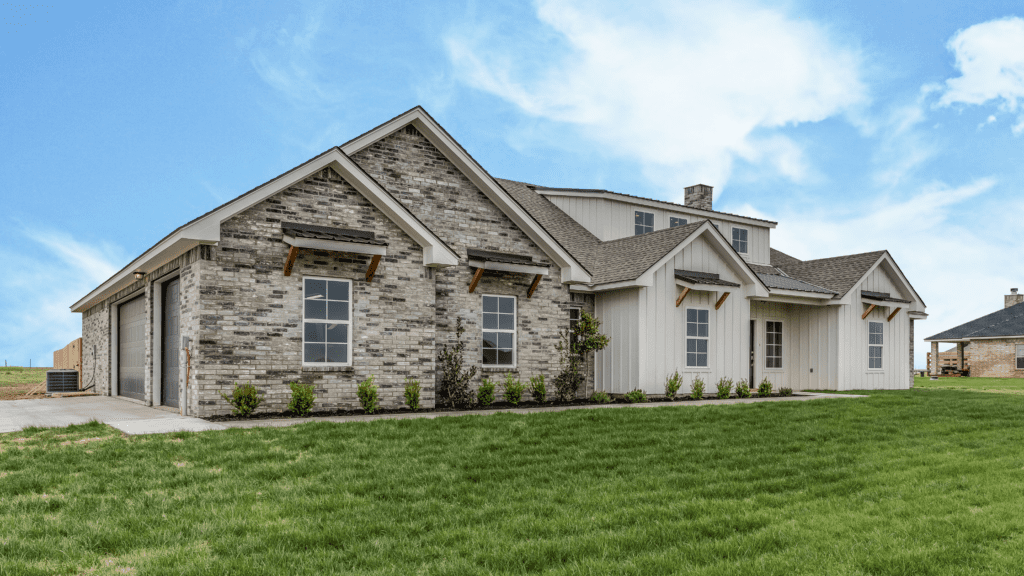The homes in Houston and surrounding locations are usually built on slab-on-grade or pier and beam foundations. While a slab-on-grade foundation is laid directly on compacted soil or fill material, a pier and beam foundation is built on top of a series of piers and beams to raise the home above the ground level and allow for a hollow area underneath, commonly referred to as crawlspace.
Irrespective of the type of foundation you have, too much water in the soil around and under your home could lead to different issues, including excessive evaporation. Excessive evaporation is a big problem, particularly in the areas affected by heavy rains and flooding. Because excessive evaporation can impact your foundation in several ways, we’re going to discuss not only the problems that too much moisture and water could cause but also how damage occurs.
How Moisture Gets Into and Moves through Concrete Foundations
Because concrete foundations aren’t impervious to water, they almost always contain some moisture. The amount of moisture in a foundation is affected by multiple factors, including relative humidity, temperature variations, ventilation/air movement, plumbing/pool leaks, and water runoff due to improper drainage and grading. Although concrete never dries completely, a concrete foundation should be dry enough to prevent specific problems from occurring.
On the downside, the longer a concrete foundation is exposed to water or moisture, the more water or moisture it absorbs. Because concrete is porous by nature and has thousands of tiny capillaries running through its mass, water and moisture can easily migrate from one part of your foundation to other parts. Since the surface of a concrete foundation is usually drier than its base, and water and moisture always follow the path of least resistance, they migrate up to the surface and then out of the concrete.
Another important thing to note is that if the relative humidity is too high and/or the ambient temperature is low, water won’t evaporate from concrete or may evaporate very slowly. What’s more, when the relative humidity is higher than the amount of moisture in a concrete foundation, the foundation may start to absorb moisture from the air instead of releasing it.
Types of Damage Resulting from Excessive Evaporation
Water damage due to excessive evaporation can be very detrimental to a home’s structure. In fact, this type of damage is often worse because it’s not readily apparent. As a result, it can affect different structural elements before you even notice something wrong. To avoid extensive damage throughout your home, it’s essential to be aware of some unseen effects that excess water and excessive evaporation could have on your foundation and home. These include:
- Damage to framing – If water seeps into your foundation, it’s only a matter of time until it affects different structural elements, such as wood beams, wood studs, and steel reinforcements. Eventually, wood will start to rot and steel to rust. This could cause serious damage to your framing
- and the entire home.
- Flooring issues –When the moisture content in the foundation exceeds the allowable limit specified by flooring manufacturers, a series of problems may start to develop. Including aesthetic issues and uneven walking surfaces resulting from loose floor tiles and/or crowning, cupping, buckling, warping, and sagging in hardwood and wood floors. Although a vapor barrier is typically installed under the slab to stop vapor migration, excess moisture in a concrete foundation increases the risk of floor failure. Furthermore, vapor barriers are relatively new building elements, which means that older Houston homes may not have vapor barriers installed under the slab.
- Premature deterioration of the foundation – If water gets into your foundation and doesn’t evaporate before the cold weather kicks in, it will freeze once the temperature drops below 32º F. The water expands when it freezes; it produces pressure in the tiny capillaries and pores within the concrete, which may develop fine cracks. As soon as the warmer weather returns and the ice begins to melt, the small capillaries and pores will contract, leading to more cracking.
- Deterioration of Insulation – If your home is insulated, and the insulation gets wet, it can lose about 40% of its R-value. What’s more, insulation is under siding or plaster; it can take a lot of time to dry out. In that case, mold and dry rot fungi may start to grow, potentially causing damage to your home as well as your health.
- Differential settlement – Too much water or moisture in the ground around and under your home will also cause clay soil to expand, which could result in differential settlement. If left untreated, differential settlement can lead to major structural damage over time.
The sooner you notice and address problems, the better it is when it comes to foundation damage. If you’ve observed any foundation issues, make sure that you contact our experienced professionals, who are ready to come to your house for a free foundation assessment and estimate!













